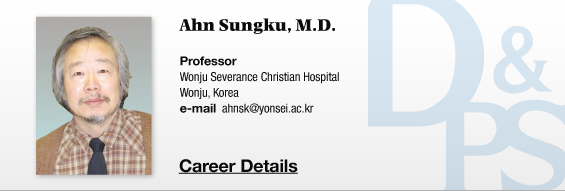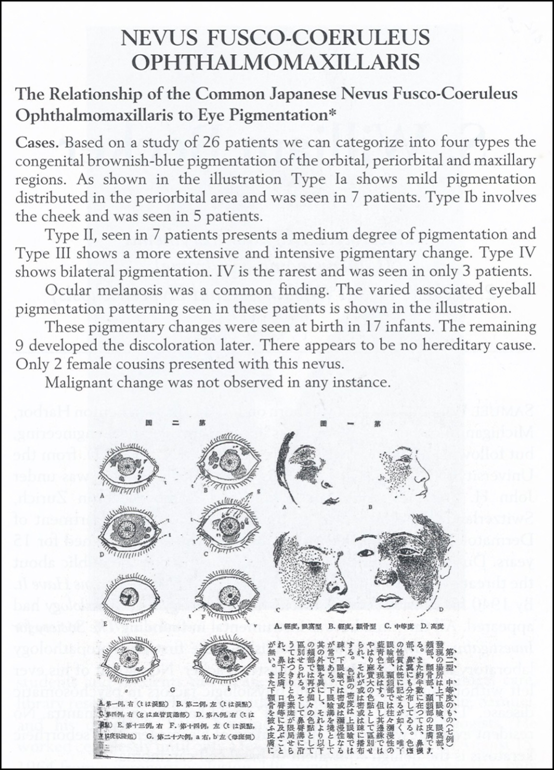
Masao Ota was born in Ito, Japan in 1885. He graduated from medical school in 1911 and got dermatologist training under Professor Dohi at University of Tokyo Medical School. Dohi was a leading expert in dermatology in Japan. Ota taught medicine at South Manchuria University (1918-1926), worked as a research fellow at the Pasteur Research Center in Paris and taught medicine at Nagoya University Medical School (1924-1928), and at Sendai University Medical School (1926-1937). In 1937, Ota inherited Dohi’s position as the head of dermatology department in recognition of his achievements in the field of dermatology.
Ota encouraged not just learning but character development in his students. He was given Lesion of Honor Medal in France in recognition of his work in fungal classification.
In 1937, he published a paper on nevus of Ota (Nevus Fusco-coeruleusophthalmomaxillaris, Oculodermalmelanosis). Fifteen years later, Ito described a similar nevus found on the shoulder. Ota was talented in both medicine and literature. Throughout his life, he wrote many popular books under the penname of Mokutaro Kinoshita. He wrote poems, novels and essays. He was a prolific writer publishing 25 books. He wrote a book on herbs titled Atlas of 100 Herbals.
[Advertisement] MAGNUM(Q-switched Nd:YAG Laser) – Manufacturer: (www.i-dana.com)]
Note: Keizo Dohi is known as the father of modern Japanese dermatology and teacher to Ota. Dohi was trained in Vienna by Moriz Kaposi. He taught at Tokyo University Medical School and trained Izuko Toyama and Masao Ota.
Ota categorized 26 patients with Ota’s nevus into 4 types. Type 1a(7 patients) had light pigmentation around the eyes and Type 1b(5 patients) had cheek lesions. Type II(7 patients) had moderate pigmentation and Type III(4 patients) had darker and more extensive pigmentation than Types I, II. Type IV(3 patients) had bilateral lesions. Most patients presented intraocular lesion. The nevi were present from birth in 17 patients and developed post birth in 9. No family history was reported but 2 female patients had cousins who also presented Ota’s nevus. There were no reports of malignant transformation (Tokyo Med J 63: 1243, 1939).

Figure 2.Masao Ota(1885~1945).

Figure 3. Masao Ota’s paper on Ota’s nevus (Tokyo Med J 63: 1243, 1939).
-To be continued




















